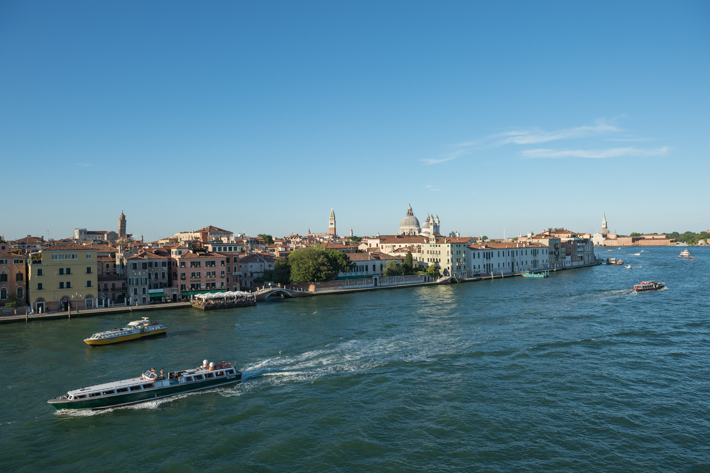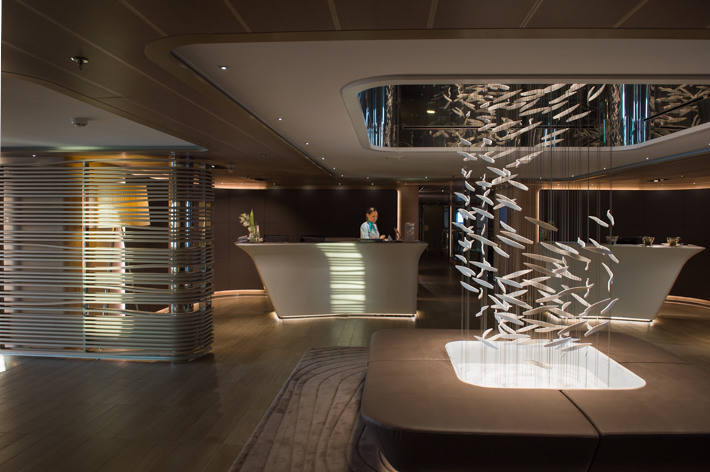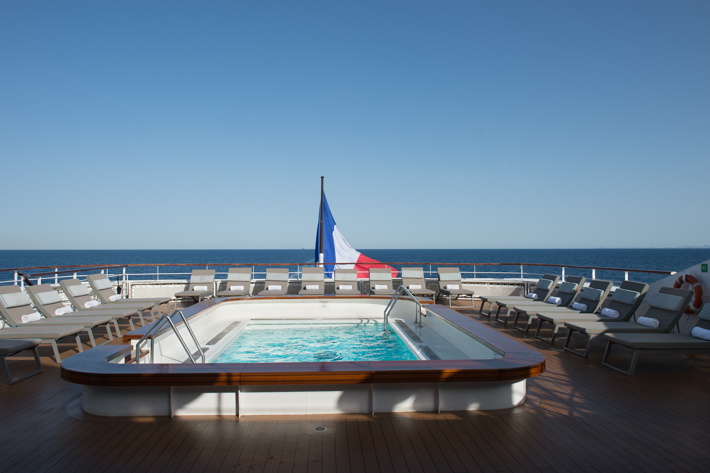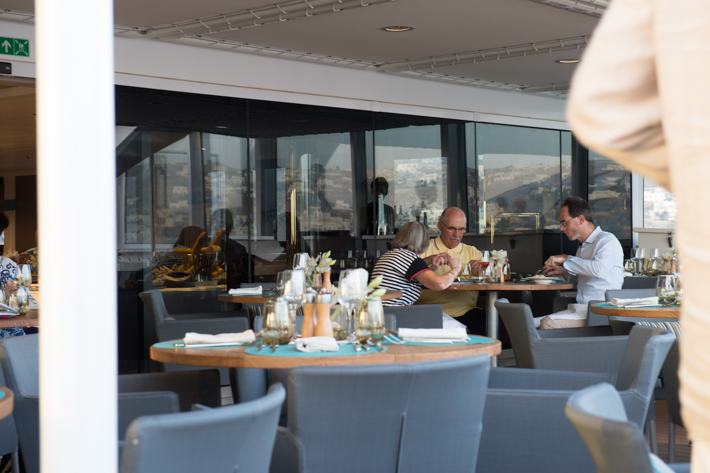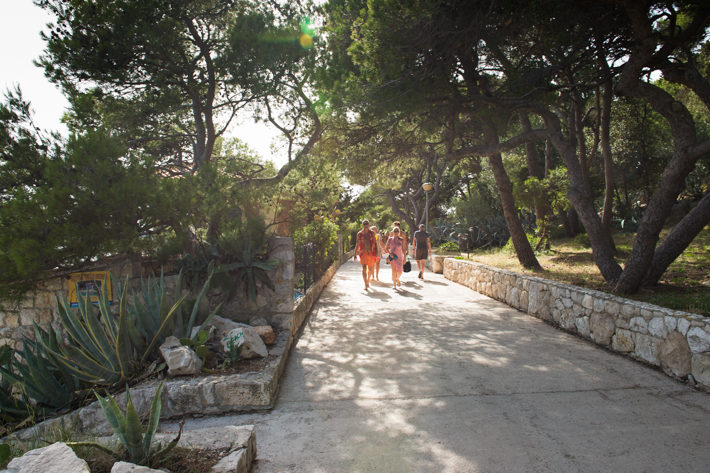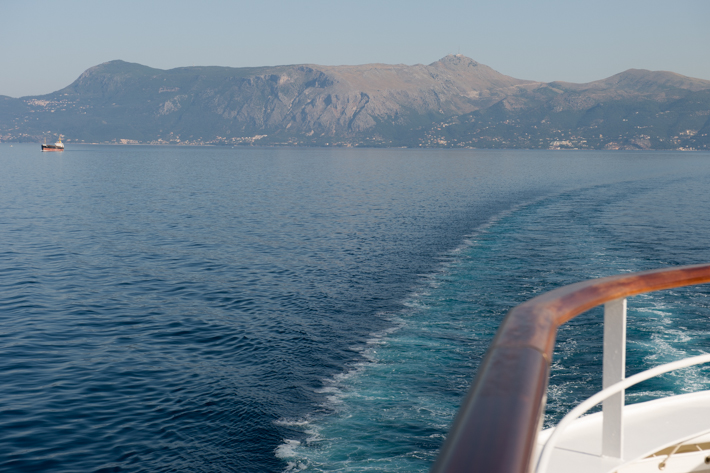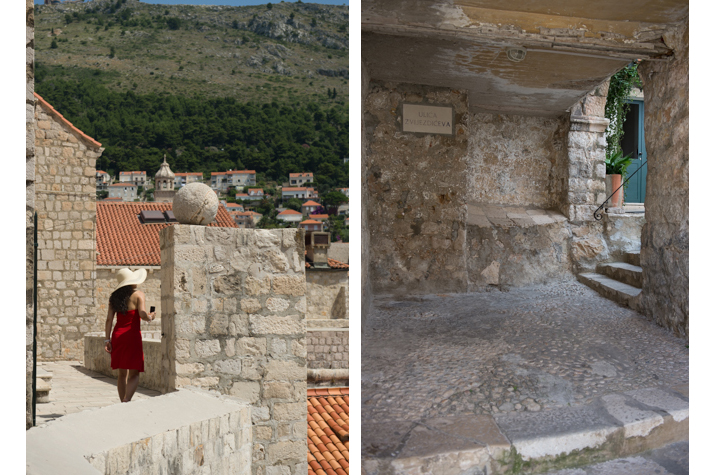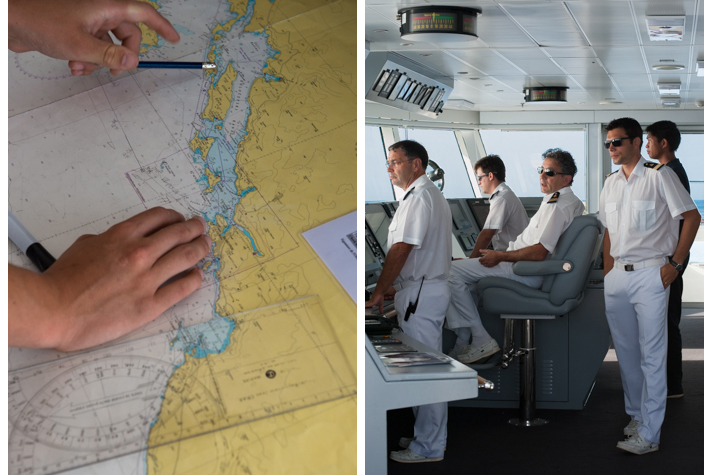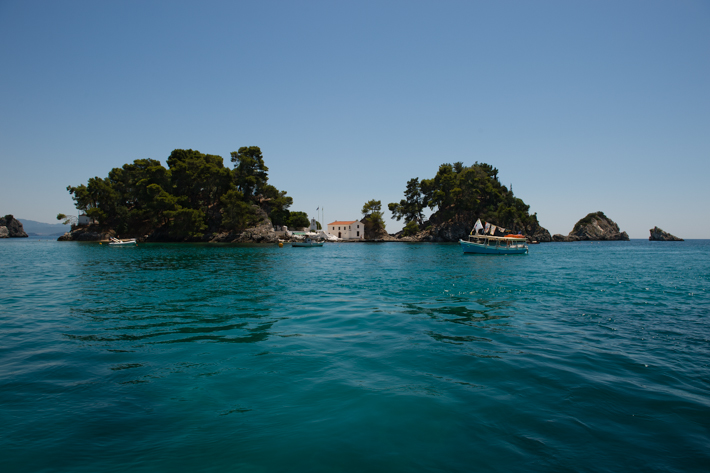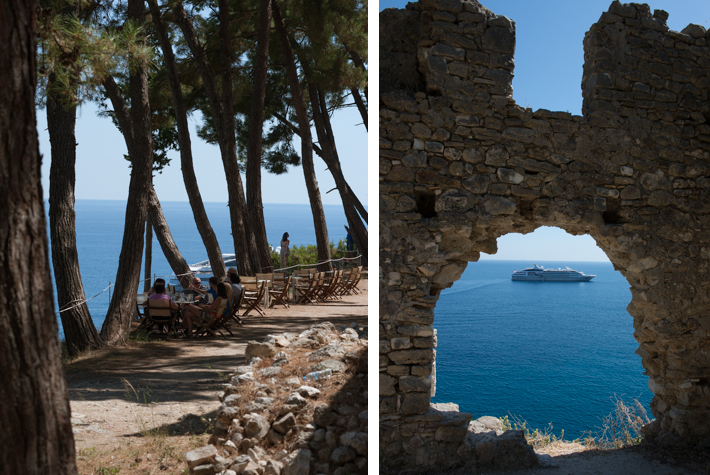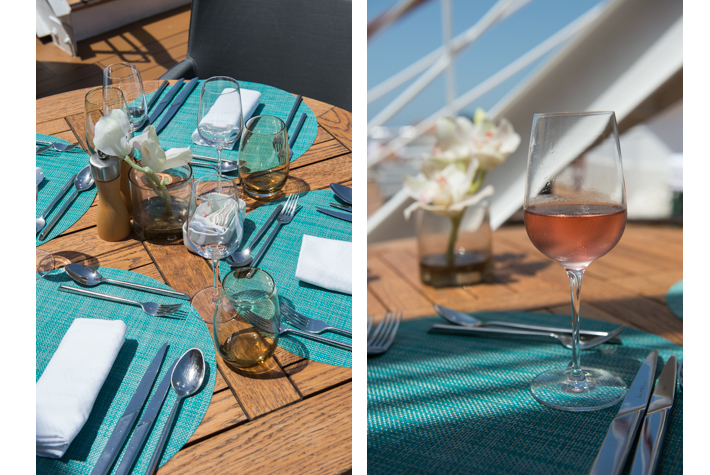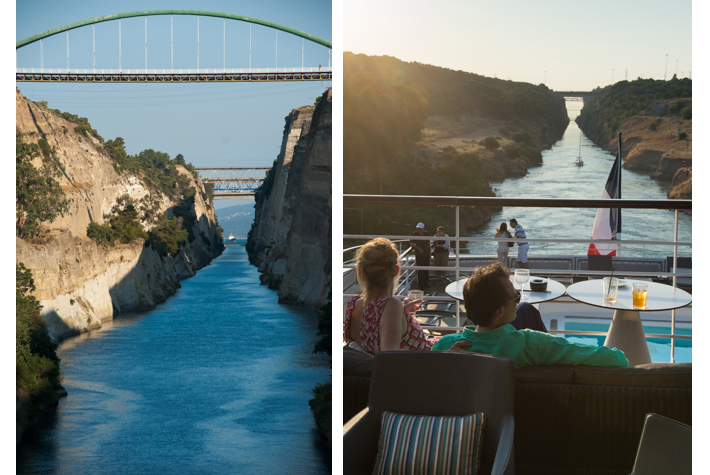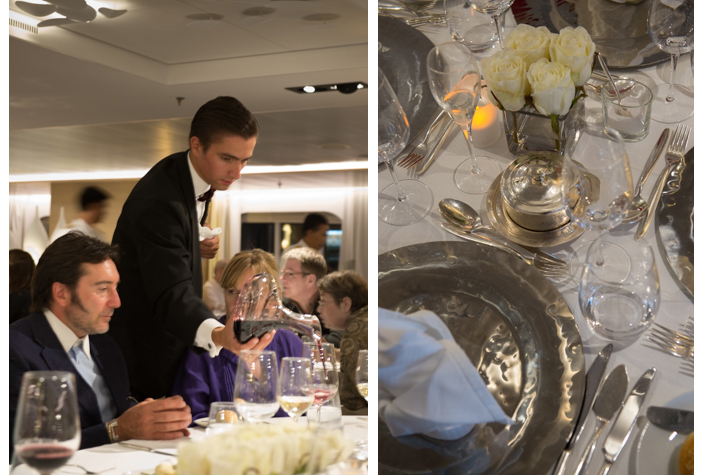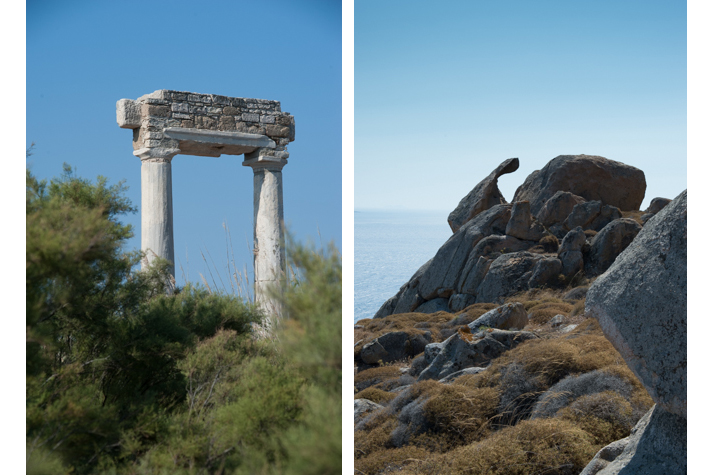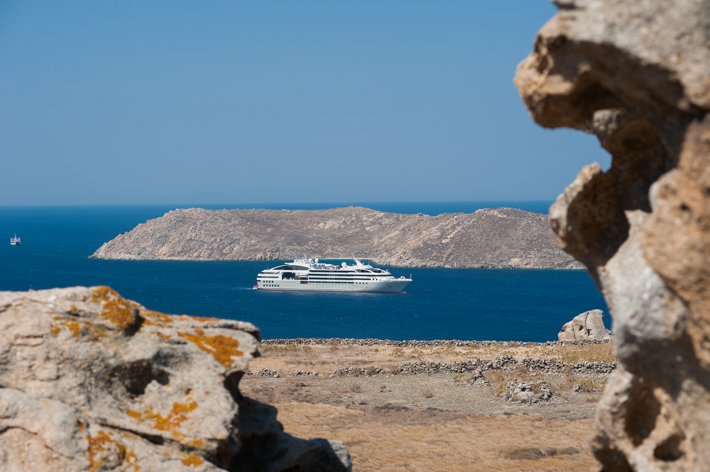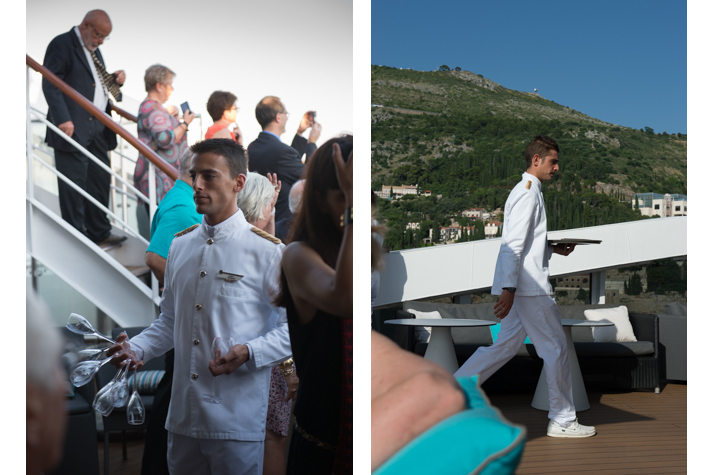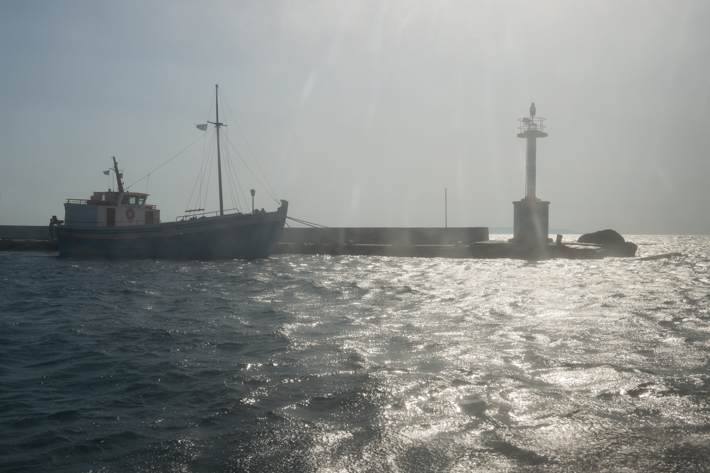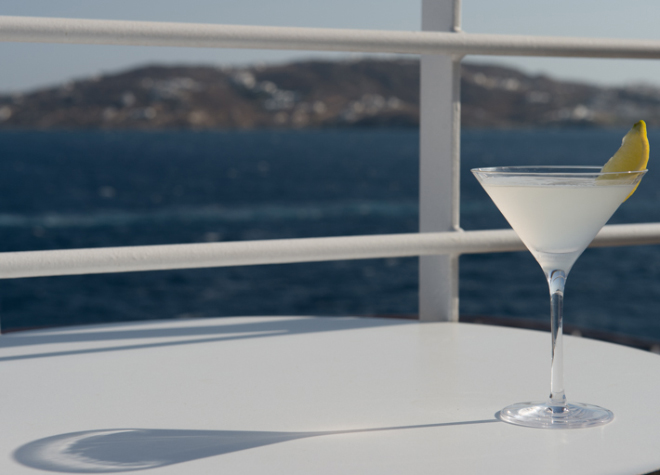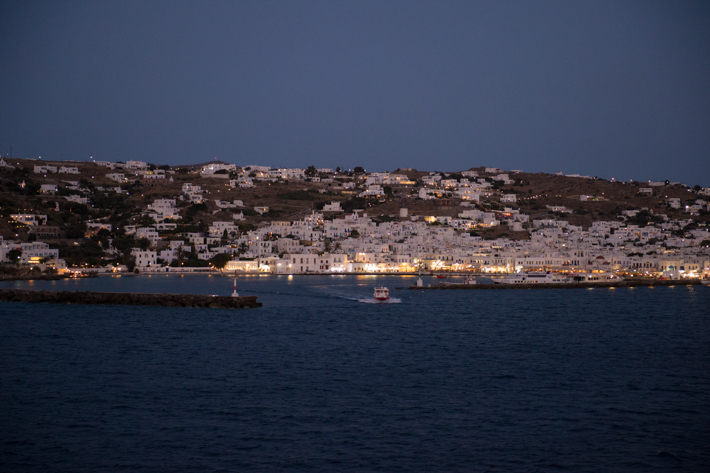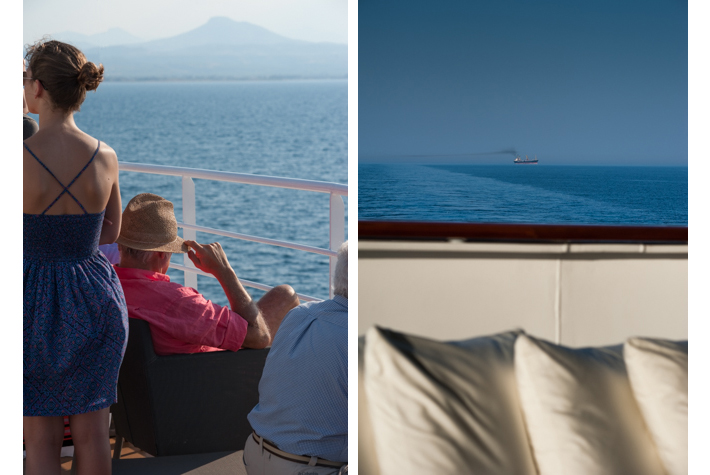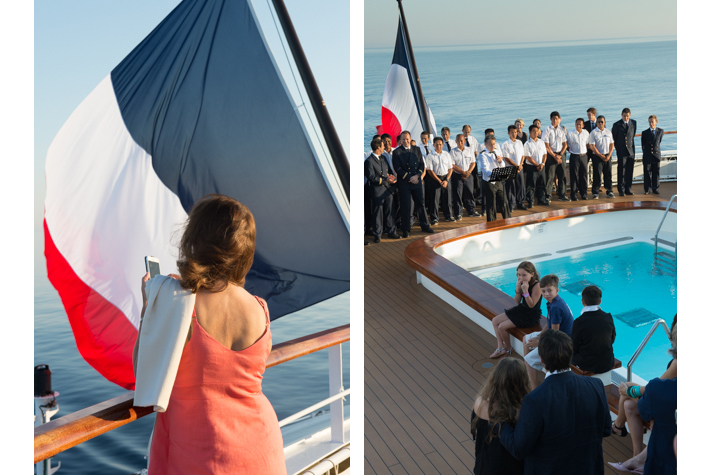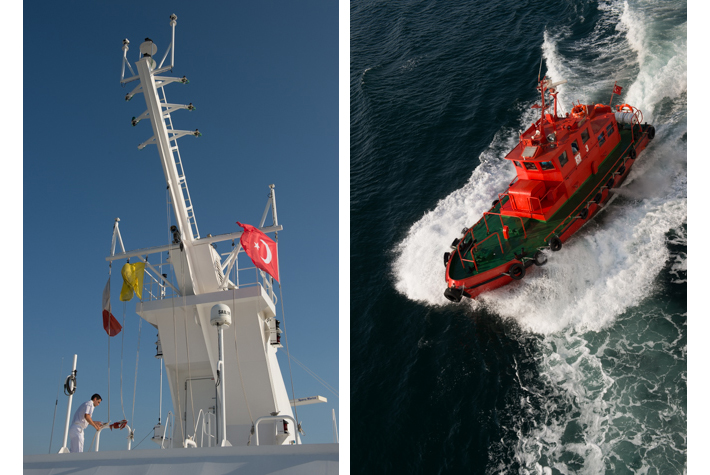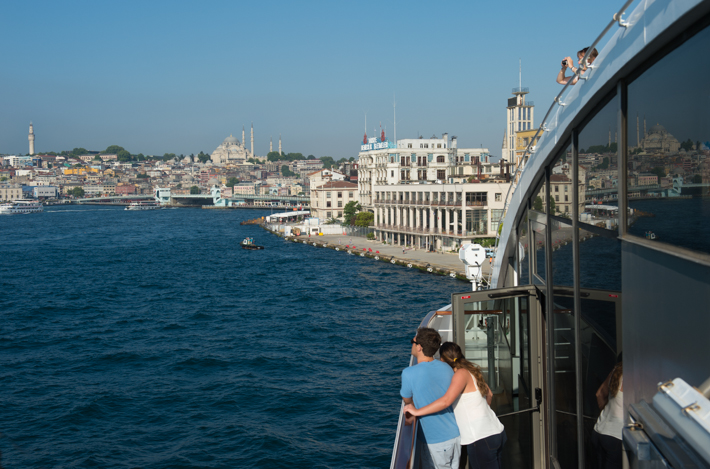How to Cruise in Style
Why we love small ships
It took a very
long while before someone convinced me to go on a cruise. Not being a seafaring type at all, I imagined that the ocean’s swell got larger the further you went out to sea, so the prospect of lurching about in big seas terrified me.
My next concern was claustrophobia. I couldn’t imagine being anything but miserable in a small cabin with tiny portholes for windows. I suppose I’d seen the Marx Brothers’ movie A Night at the Opera once too often, which has the famous scene when a couple of dozen people comically cram into a minuscule cabin.
I also scoffed that cruising was only for unadventurous types who were mobily challenged. Spending a scant few hours in a destination following a guide with a raised umbrella didn’t seem to me the ideal way to experience a place.
And maybe it isn’t, but I discovered something else: you can always go back and revisit on your own terms.
I realised to my delight that I was wrong on all the other counts too.
The ocean can be a millpond and more often than not a cruise is without any wave action at all. The one time I did encounter huge seas, on the way to the Falkland Islands, I survived, although I had a nervous few hours. Ships have stabilisers and all kinds of technological wizardry these days and most often cruise seasons follow the good weather.
Unless you’re in the cheapest seats, modern cruise ships don’t have portholes, but windows and walk-on terraces and staterooms that are masterpieces of design. I’ve never felt a moment of claustrophobia.
Last year, as passengers on Le Soléal, one of fleet of small luxury ships from the French cruise line Ponant, we sailed into Hvar, Croatia, a lovely seaside village that wasn’t on my radar. I doubt I would have gone there otherwise. On another occasion, I took an utterly fascinating cruise that stopped in many of the old ports of China. I wouldn’t have troubled to fly and bus in, especially to a place like Dalian, near North Korea. But I’m so glad I did.
The one thing I have learnt about cruises – for me, there’s no better way to navigate the seas than on a small ship.
Sailing also has a romance to it. Seeing a place from the water often reveals its layers of culture as the maritime ports in these places existed before anything else. And what’s best of all? Packing and unpacking only once.
But the one thing I have learnt about cruises above all else – for me, there’s no better way to navigate the seas than on a small ship.
Ponant exemplifies what I like about this more personal way of cruising. The company was launched in 1991, when Jean-Emmanuel Sauvee and Philippe Vidou, classmates at the French merchant navy school in Nantes, joined forces to create the ‘ideal cruise ship’ to undertake five-star expeditions.
Their first ship was the elegant three-masted Le Ponant but it was the launch of the sexy Le Boréal in 2010 that really set the company apart. Designed by Joel Bretecher, who once designed cars for Ferrari, the sleek grey-hulled ship with its striking glass arches broke the mould for passenger ship design.
Since the launch of Le Boréal, Ponant has launched three sister ships in the small luxury category, L’Austral, Le Soléal and Le Lyrial. A new class of handsome explorer ships have been gradually launching over the past few years – Le Lapérouse, Le Champlain, Le Bougainville, Le D’umont-d’Urville, Le Commandant Charcot, Le Jacques Cartier and Le Bellot.
Resembling racy mega yachts, the intimate 132-stateroom small luxury ships are designed to give guests the experience of sailing on their own private yacht – one that has the bonus of ice certification for the Arctic and Antarctica. Incorporating the very latest navigational technology for expedition cruising, the smaller ships are environmentally friendly, with a quiet and economical electrical propulsion system, a positioning system that eliminates the need to drop anchor and disturb the sea bed, and the use of less polluting Marine Diesel Oil.
Close relationships with staff and crew, including an ‘open bridge’ policy (guests can visit the bridge at any time) further foster the idea – only if its for the duration of the cruise – that you have your own ship at your disposal, with 200 friends along. Being small ships, the Ponant fleet can sail from cove to cove and moor in places the larger ships can’t access, with the captain having flexibility to alter course to follow the sun or whales or just a good swimming spot. The ships have their own marina for watersports, just like private yachts.
Last European summer, we sailed on Le Soléal on a dream itinerary from Venice to Istanbul. Approaching it from the Venice lagoon, its elegance of design, compared to the bigger-hulled cruise ships docked nearby, is immediately apparent. Befitting a ship named for the sun, it is painted a dazzling white, while its two sisters range in hull colour from smoky grey to dark charcoal.
Le Soléal’s nautical design concept makes me feel like I’m at sea, rather than in some Edwardian drawing room.
One of the great moments on a cruise is the tradition of being greeted by the crew as you step on board. I immediately sense we’re in for a treat on this cruise, as we’re welcomed by crew wearing immaculate uniforms. Over the next few days I remain in awe of the beautifully tailored navy and gold-braided suits and other nautical variations on white and navy the crew and staff change into for different occasions. They’re the most dapper crew I’ve met on the seas.
We are enveloped in Frenchness. Around fifty percent of Ponant’s passengers are French, many of them choosing to travel with children and grandchildren during holiday time. There are Australians, Americans and South Africans as well as some other Europeans on board this cruise. Menus feature French cuisine and there are complimentary French wines served with each meal. (Ponant’s cruises now feature open bars throughout and the explorer class ships boast underwater multi-sensory lounges known as ‘Blue Eye’.) Announcements are given in both French and English by a multi-lingual crew.
But it is the ship itself that best conveys the concept of French chic. The interior design is by French architect Jean-Philippe Nuel, who is well known for his work with hotel groups Sofitel, Club Med, Le Meridien, Westin, Taj and Marriott. The interiors are done out in shades of white, ivory, grey and natural blonde woods, which make the spaces feel large, open and light. So many cruise ships go in the other direction with dark wood panelling and rich furnishings, and Le Soléal’s nautical design concept makes me feel like I’m actually at sea, rather than in some Edwardian drawing room.
Our Prestige Stateroom 437 is well positioned midship and near the theatre, where lectures are given and flamboyant shows are performed after dinner. (All those feathers and sequins are perhaps not so chic.) The cabin is 200 sq feet with a 43 sq foot private balcony and a separate shower/bathroom and toilet. Only eight of the 132 staterooms and suites don’t have a private balcony. There is a small round table and two chairs inside and a table and chairs on the deck, plus bedside shelves with plenty of room for books/iPads and so on (plus many electrical outlets.) A shelf along the length of the room provides extra space for the paraphernalia two people accumulate.
We’ve sailed in larger staterooms (some with full baths) but this is the most cleverly designed, with plenty of wardrobe space and drawers, room under the bed for suitcases, and a brilliant glass-encased bathroom that offers views of the sea while you’re showering – or you can draw a sliding door across the glass if you want privacy. There’s lots of room in the bathroom for toiletries and there’s even a clothesline for hanging your washing. The showerhead is large and produces plenty of good hot water.
The uplifting colour palette is white and grey with touches of turquoise. The bed head and the wardrobe are quilted with white topstitched leather and the drawers have leather handles like early steamer trunks. Très elegant.
This colour scheme extends seamlessly throughout the ship, with the two lounges and bars, the gastronomic restaurant, the grill by the pool and the small Sothy’s spa. Even the gym, while small, is light and airy with floor-to-ceiling windows looking out to sea. White orchids, shells and organic-shaped vases are the decorations of choice. The lobby and reception area is dominated by a delightful transversal mobile of enamelled pieces by Marie-Andrée Côté, one of a number of striking artworks and objects that fill the ship’s public spaces.
There are cruises for families, gays, French-speaking people and adventurers. If you like to travel with 4000 other likeminded citizens, there are cruises for you.
The sun lounges around the small swimming pool (it’s more like a plunge pool) are popular and are annexed early in the day, as is the terrace outside the Panoramic Lounge on the bow of the ship. However, I never feel the lack of private space. I do have to share my favourite outdoor bar at the back of the ship with other guests, but when I want to relax with a book, I discover sun lounges on Deck 5 that few people visit. I can put my feet up undisturbed.
Our fellow passengers contribute to the stylish ambience of the cruise, a fashion parade of how to do casual cruise elegance. The men are as snazzy as the women – one gentleman appearing in several changes of lavender and pink clothing and another strikingly handsome in his handlebar moustaches. There’s no obligatory formality onboard or a dress code (except in the gastronomic dining room.)
There’s even an elegance to the itinerary. Nothing is rushed and there’s no need to join a shore excursion unless we want to. I loaf around on board because I enjoy the sensation, when the other passengers are on shore, of having the ship to myself.
Sailing the Dalmation and Ionian coasts, Le Soléal anchors close to port, while the larger cruise ships must anchor further away. Our ship has flexibility in its itinerary, so we beat the crowds onto the small village of Parga, Greece, and arrive early on the island of Delos, a romantic, desolate place housing one of Greece’s best collections of ancient ruins, before the tourist ferries arrive. Our ship is also small enough to sail through the magnificent Corinth Canal, with only a metre or two spare on each side. We anchor so close to Mykonos we can hear the repetitive beat of music from the nightclubs in town.
Le Soléal’s Captain, Etienne Garcia, who looks like a French movie star, throws both a welcoming and a goodbye party for his passengers. There has been time during the week for passengers to get know him (and his family, who are onboard) at meals, or on the bridge, watching the officers manoeuver the ship. “For us, you are the soul of the ship who will echo long after this voyage,” is his heartfelt farewell on our final night before Istanbul.
Now that is stylish.
The idea of ‘cruise’ is what you want it to be. There are rowdy cruises for singles who want to spend their entire holiday in a sexy clinch with a stranger or entirely blotto (and often both experiences at once) or cruises catering to well-read people who are interested in lectures about ancient Mycean civilisation.
There are cruises for families, gays, French-speaking people and adventurers. If you like to travel with 4000 other likeminded citizens, there are cruises for you. If you’d rather be on a ship with sails, you can do it. If the kids want climbing walls and X-boxes and you want a cabaret each night, you can find exactly that kind of cruise. If you want to trek through the New Guinea jungles and meet isolated tribes, you can do that too.
But our advice for those who yearn for the romance of the high seas is to keep it small.
Mr and Mrs Amos were guests of Ponant cruise line.

